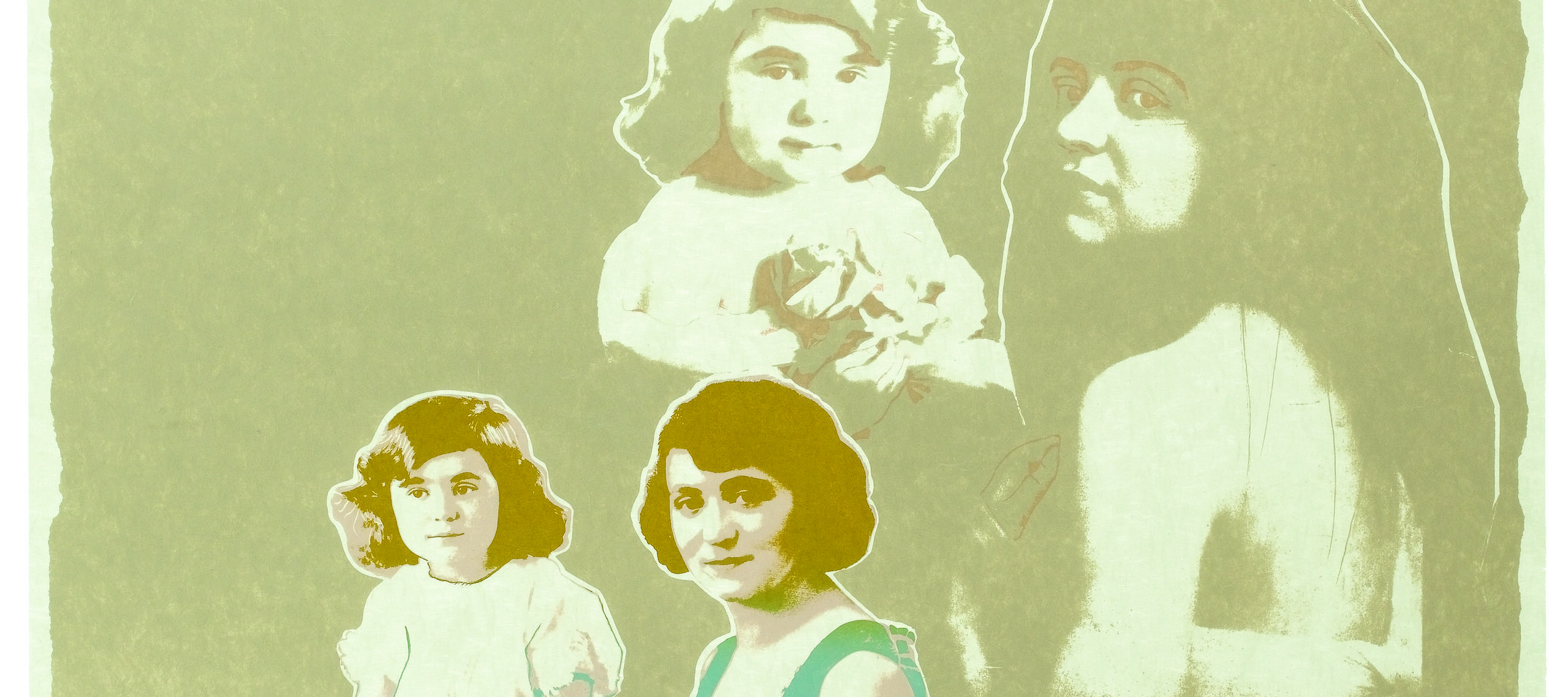Drawn from the National Museum of Women in the Arts’ (NMWA) collection, June Wayne’s “Dorothy Series” offers an intimate look at the life of the artist’s hard-working and fiercely independent mother, Dorothy Kline. The exhibition is on view from June 25, 2010, through September 13, 2010.
June Wayne (b. 1918) created the series’ 20 lithographs in collaboration with Ed Hamilton of Hamilton Press. Choosing among her mother’s possessions—photographs, newspaper articles, tax returns—and using a rich array of colors, Wayne conveys the challenges and successes her mother faced as an immigrant and female in the early part of the 1900s.
“Wayne’s poignant portrayal of her mother’s life in 20 freeze frames compels us to consider the lives of women in the earlier part of the 20th century. Dorothy’s decisions were not always hers to make alone, but in accordance with society’s conservative expectations of a divorced mother, a woman with a career, and an immigrant,” said NMWA Chief Curator Dr. Jordana Pomeroy who organized the exhibition.
By examining the dualities of her mother’s experience—tradition and progress, domesticity and vocation, marriage and divorce, ambition and lack of recognition—Wayne is able to present a portrait that promises to be familiar to many.
In Write a Lonely Soldier, the personal and the historical dramatically collide. In its depiction of a wartime bride marrying a soldier she barely knows, the specific context of the print’s narrative is firmly established. Yet the white silhouette of the bride, subsumed by a muted rainbow of color, suggests the conflict between hope and unmet expectation that would later mark Dorothy’s marriage.
For Delegate Dorothy, Wayne’s collage approach reinforces the personal experiences of her mother with respect to historical circumstances. An enlarged New York Times article, tinted blue, about the 1953 Women’s International League for Peace and Freedom congress in Paris frames the work. Yet what dominates the scene is the yellow-hued portrait of Dorothy and her female companions en route to the congress. Neither image would have as much force without the other, emphasizing the close relationship between private and public, historical and personal lives.
The biography of both artist and subject are closely intertwined. The Dorothy of the portfolio’s title faced many hardships as an immigrant, single mother, and career woman. Her tenacity has evidently been passed down to her daughter June, whose list of accomplishments include participating in the Works Progress Administration (WPA) Easel Project in Chicago during the 1930s and founding the prestigious Tamarind Lithography Workshop 1960 in Los Angeles to train master printers.
At the heart of the series, Wayne explores a central question “Could my personal view of her [Dorothy] allow her voice to come through, just as writers tell stories in the voice of another person?” On display through the summer, viewers can decide for themselves how these two remarkable narratives interact.
About June Wayne
Born in 1918 in Chicago, June Claire Wayne had her first solo exhibition in 1935 and her second in 1936 at the Palacio de Bellas Artes in Mexico City after which she became an artist on the WPA Easel Project in Chicago. Her art up to that time reflected the Ash Can School and the depression years. By 1939 she had moved to New York, had a studio and supported herself as a jewelry designer.
After Pearl Harbor in 1942, Wayne moved to Los Angeles hoping to work in the aircraft factories to aid the war effort. To this end she earned certification in Production Illustration at the California Institute of Technology. The optical rules of this new discipline caused a total change in her aesthetic which from then on linked art to science as well as to allegorical narrative.
In 1947 Wayne began working with lithography, quickly outpacing the technical limits of printing in the U.S as compared to Europe. To ensure that Americans would be on par with other master printers around the world, June Wayne, with support from the Ford Foundation, established the Tamarind Lithography Workshop in 1960.
Support
June Wayne’s “Dorothy Series” is organized by the National Museum of Women in the Arts and is generously supported by the NMWA Members.
# # #
National Museum of Women in the Arts
National Museum of Women in the Arts (NMWA), founded in 1981 and opened in 1987, is the only museum solely dedicated to celebrating the achievements of women in the visual, performing and literary arts. The museum’s permanent collection features 4,000 works from the 16th century to the present created by more than 800 artists; including Mary Cassatt, Frida Kahlo, Alma Thomas, Lee Krasner, Louise Bourgeois, and Chakaia Booker along with special collections of 18th-century silver tableware and botanical prints. NMWA is located at 1250 New York Avenue, NW, Washington, D.C., in a landmark building near the White House. It is open Monday–Saturday, 10 a.m.–5 p.m. and Sunday, noon–5 p.m. For information, call 202-783-5000 or visit www.nmwa.org. Admission is $10 for adults, $8 for visitors 65 and over and students, and Free for NMWA Members and youth 18 and under.

